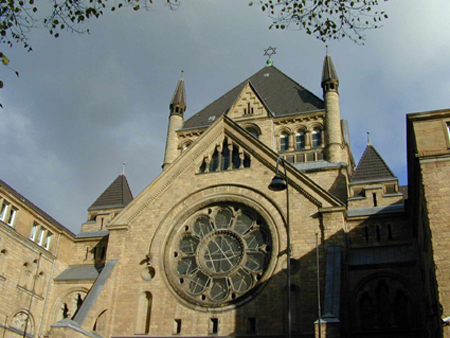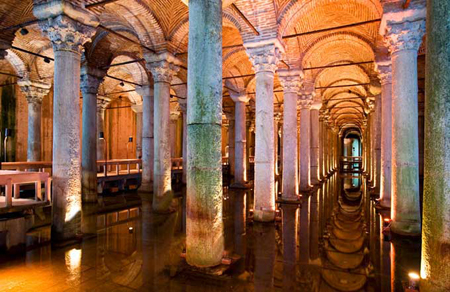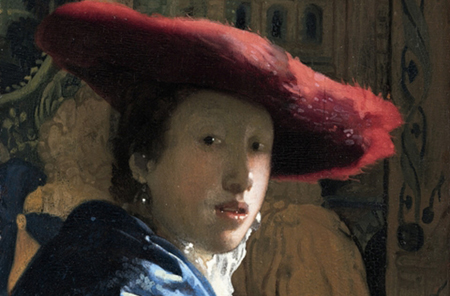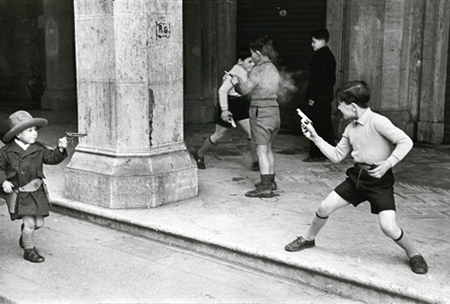End Google Tag Manager -->
Home › Archivos por

Mónica Boixeda
The history of Cologne started back in the time of Christ´s birth. With more than 2000 years of history, this city on the Rhine has had a very eventful history, with many different empires ruling it over these two millennia. The Romans were the first to occupy the city. Agrippa, a military leader during the time of Emperor Augustus, decided to found a city where the Rhine went out the valley into the plain. Cologne’s name comes from the Latin name, Colonia Claudia Ara Agrippinensium. For more than four centuries, Cologne was under the Roman influence and today you can enjoy its archaeological remains. Below the Rathausplatz (the City Hall), in the Archäologische Zone (the archaeological zone), part of the Jewish Museum, you’ll find over 250,000 artifacts, the remains of the governor´s palace and Cologne´s oldest stone building that were found during a 13500 m2 excavation. All these can be accessed at the Kleine Budengasse for just € 3.50 from Tuesday to Sunday from 10h to 17h. Traveling in time some centuries ahead, we find the most famous landmark of the city: the cathedral, better known as Dom. The construction of the Dom began in the XIII century, but stopped in the XV century and three centuries later resumed to be finished in 1880. Until 1884, it was the tallest building in the world and today, the most visited monument in Germany; The Dom has the largest facade of any church anywhere in the world. Based in the cathedral of Amiens, the church’s floor was built with the shape of a Latin cross and has vaults that are among...

Xysa
Tel Aviv is the second largest city in Israel, with over 400.000 people calling it home. On the map you can find Tel Aviv on the west of Israel adjacent to the Israeli coastline of the Mediterranean. With 2,5 million international visitors every year, Tel Aviv is number 5 on the list of most visited cities in the Middle East and Africa. It is also called “The City That Never Sleeps” because of its 24-hour culture, popular beaches, fun bars, restaurants, cosy cafes, lively parks, numerous shopping locations and landmark neighbourhoods like Old Jaffa and Neve Tzedek. Last year Lonely Planet named Tel Aviv the third “hottest city” in the world. Tel Aviv is also the most liberal city in Israel. It is trendy, full of action, has a big underground party scene and huge gay scene. When you will be in Tel Aviv and you are also a hipster and/or enjoy your travels to contain more than the obvious touristic activities, you are reading the right blog! Here´s a list of alternative places to go in Tel Aviv. Hummus Ashkara This is where locals go for an excellent hummus and fuul (fava bean paste). Their credibility was affirmed when a national newspaper voted their hummus the best in the country. You can find it on 45 Yirmiyahu St Little Tel Aviv .The sign is in Hebrew, so you have to look out for the Coca-Cola sign and little terrace on the street. Minzar Minzar is a coffeehouse that has a bohemian style to it. However ths coffee house is specialized in beer. You will find this place from the main...

The Only Team
As soon as you arrive in Istanbul, you’ll discover a world of magical colors, a blend of East and West, a very impressive Turkish city that will make you remember the Arabian Nights. Istanbul is divided into West and East by the Bosphorus, as well as by Golden Horn, where the Old City is located, place where we will focus most of our interest. 1. The Blue Mosque The Blue Mosque also known as the Sultan Ahmet Mosque is located in the Old City and has the largest and most spectacular courtyard anywhere in Turkey. Decorated with 20,000 handmade blue tiles, the Mosque has six minarets. When coming to the Mosque, remember to take off your shoes; women will also have to cover their head and shoulders. The sultan ordered the construction of this Mosque in front of the Hagia Sophia with the intention of outshine this Christian building. 2. Hagia Sophia Museum Right after the Hippodrome of Constantinople you’ll find the Hagia Sophia Museum, which is a formerly Byzantine basilica that was transformed into a Mosque during the Ottoman Empire time. Nowadays the building is a museum declared a World Heritage Site. It features several domes, the largest in the world, a Mihrab and several minarets. 3. Yerebatan Cisterns Do not forget to visit the Yerebatan Cisterns, which were built to supply water to the Great Palace of Constantinople. 4. Topkapi Palace After having a Turkish bath, you should go ahead and visit the Topkapi Palace, which is a walled Imperial Palace that illustrates the life of former sultans and their harems, as well as some of the...

Alexa Ray
When it comes to visiting Rome, the possibilities for entertainment and pleasure are unlimited. Of course, what you´ll have most at hand is art and culture in this great Italian city, and when it comes to art there´s nothing better than a visit to the Scuderie del Quirinale. Here is where the exhibition Vermeer: Il Secolo D´Oro dell´Arte Olandese (Vermeer: the Golden Age of Dutch Art) will be taking place, an important exhibition that´s the first one to be carried out in Italy of this great master of 17th-century Dutch painting. The exhibition not only has some of the most representative paintings by Johannes Vermeer but also thirty paintings by some of his Dutch contemporaries. This way, those who explore this valuable exhibition for the first time and don´t know anything about Dutch painting will not only have a direct perspective with the work of this unique artist but will also be able to contrast his work and that of his most famous fellow Dutch artists. It´s worthy of a reminder that Vermeer´s work, albeit a brief one since he only has 33 to 35 paintings to his name, is highly important in the famous Golden Age of Dutch art. This era was also shaped by an important economical and political change, which allowed for the patronage that Vermeer, of course, took part in. Vermeer´s painting is mainly of traditional style of historical character, since it vividly portrays scenes of everyday life and reality with amazing realism. It´s important to highlight the significant work that Vermeer did with light and the shadows in his paintings, one of his main talents....

Mónica Boixeda
Images and Words is the name of the photographic exhibition dedicated to Henri Cartier-Bresson hosted at Reggia di Caserta until the 14th of January. This is a quick glance at the works of one of the fathers of photojournalism, which was possible thanks to a special selection made by critics, writers, intellectuals, photographers and even Henri Cartier-Bresson’s friends. The “exclusive selection” of 44 photographs made the launch of this unique exhibition possible. We’ll be able to find, along with each photo, comments by intellectuals and friends of the photographer. The words that accompany the images were written by, among others, Pierre Alechinsky, Ernst Gombrich, Leonardo Sciascia, Alessandro Baricco and Ferdinando Scianna. This is a certainly different and interesting way to learn about the life and works of Henri Cartier-Bresson and at the same time, go deeper in issues related to photography: its communicative power, stylistic peculiarities and its role in the society.” The exhibition has also been included in a publication edited by Contrasto Books. This book presents 50 interventions around the aforementioned critics and intellectuals, who tell their own opinions and thoughts about the work of Henri Cartier-Bresson. This is an interesting book that I suggest you to read because it will prepare you if you decide to visit the exhibition. Useful information Reggia di Caserta is located half hour away from Naples. You can get there by car taking the Autostrada A1, via Caserta Nord, or by train to Caserta and walk from the station about five minutes. Keep in mind that Reggia di Caserta is an extraordinarily beautiful place; in fact it is no a coincidence...







 English
English Français
Français Deutsch
Deutsch Italiano
Italiano Español
Español